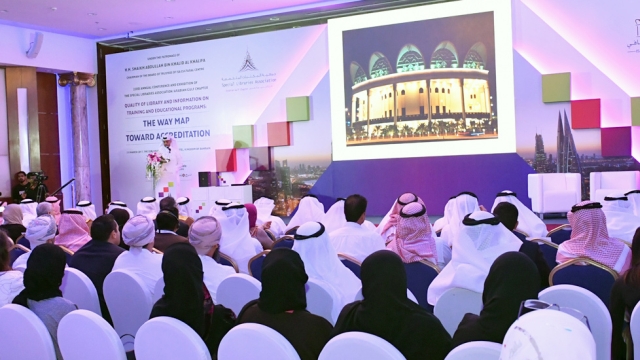
Knowledge creation: innovation and accumulation of Cantonese songs [Arts & culture in KM part 16]
This article is part 16 of a series exploring arts and culture in knowledge management.
Cantonese songs, an important carrier of Cantonese culture1, have formed a unique style and infectious melody influence through decades of development. I will analyze the performance of Cantonese songs in the four aspects of “knowledge creation”, “knowledge sharing”, “knowledge application”, and “knowledge management” through the framework of knowledge management (KM).

The development of Cantonese songs is deeply influenced by the “nine tones and six keys” phonetic system of the Cantonese language. In the process of creation, creators not only need to pay attention to the combination of melody and lyrics, but also need to convey emotions and thoughts accurately.
Eason Chan’s “Salon” explores the loneliness and alienation of people through easy-to-understand but philosophical lyrics. Many proud moments in life are listed to express the rapid passage of time in the world. Life is better if we adjust our mindset to enjoy it. The song’s melody is gentle, but the emotion is conveyed through the unique rhythms of the Cantonese language. This reflects the combination of language and emotion in “knowledge creation”, as the creator uses the Cantonese phonological system to express complex inner emotions through concise language.
Knowledge sharing: the global spread of Cantonese songs
“Knowledge sharing” in knowledge management emphasizes the widespread dissemination and sharing of knowledge through different platforms and channels. The global dissemination of Cantonese songs has been realized through various media.
Cantonese songs can be quickly spread through digital platforms such as YouTube and Spotify, as well as through TV programs, film clips, and music festivals. These channels and activities have made Cantonese songs popular not only in Guangdong, Hong Kong, and Macau, but also gradually embraced by the global audience. This digital dissemination extends the audience scope of Cantonese songs and enables non-Cantonese speaking audiences to appreciate their unique cultural charm through multi-language subtitles, phonetic transcription, etc. The Cantonese songs are also accessible to non-Cantonese-speaking audiences through the “knowledge system”. Through the “knowledge system”, it can be shared globally, avoiding the loss of culture and realizing the cross-regional dissemination of culture.
Application of knowledge: diversification of music styles and innovation
The application of knowledge is reflected in how to transform existing knowledge into new cultural values. In the development of Cantonese songs, the combination and innovation of different musical elements have led to their diversified forms of expression.
Eason Chan’s “White Roses” combines jazz styles with the rhythms of Cantonese, expressing the delicacy and complexity of emotions. “When Grapes Are Ripe” blends pop and folk elements to convey the waiting and growing in love. By fusing different musical elements, not only enriches the style of Cantonese songs but also brings new vitality to the innovation of Cantonese songs. By absorbing different music styles and transforming them into works with Cantonese cultural characteristics, Cantonese song creators have created new musical values of artistic expression, attracted more young listeners and expanded the audience base.
Our lecturer Rajesh Dhillon adds that one aspect that songwriters could explore further is the feedback loop in knowledge creation. For instance, how listeners or fans contribute to the evolution of Cantonese songs through feedback or remix culture. Engaging the audience in this process can enhance knowledge co-creation and sustain cultural relevance and maybe even result in hit music.
Knowledge management: preservation and inheritance of classical works
The key to “knowledge management” lies in the preservation and effective use of core knowledge. As an important cultural asset of the Cantonese language, Cantonese songs have been handed down through different eras through the preservation and digital storage of classic works.
Cantonese songs, with the help of lyrics, music style and emotional expression, integrate social reality and cultural connotation into music, becoming a cultural symbol of a specific era. Reflecting social reality and the lives of citizens, the lyrics directly depict the daily life, work and struggle of citizens, reflecting the living conditions and social changes of ordinary citizens.

At the same time, these lyrics also reflect major historical events and the background of the times in the Cantonese region, helping the audience understand the social atmosphere and historical context at that time. “Glorious Years” (Beyond) was created in the 1990s, reflecting the changes in South Africa after the end of the apartheid policy. The lyrics are full of calls for freedom and equality, and have become a representative work of Hong Kong music reflecting social justice and historical changes. It not only cares about global historical events, but also expresses Hong Kong people’s pursuit of social fairness and justice through lyrics. Cantonese songs also often reflect the unique cultural atmosphere of the Cantonese-speaking regions by incorporating local customs, festivals, dialects and other elements.
Our lecturer Rajesh Dhillon advises that there is so much to learn from this song, each sentence carrying so much impact. Here is an extract from Wikipedia2: “In 1990, Beyond released one of their signature songs, “Glorious Years”. The song was about racism and the struggle of Nelson Mandela in South Africa. According to a later interview with Wong Ka-Keung, Mandela was “deeply moved” when he heard about the song during his final days in hospital.”
Such works are not only musical works, but also important knowledge assets in Cantonese culture. They have become an important carrier of cultural transmission by recording social customs and values. They depict the most realistic living conditions of people from all walks of life in different eras, epitomizing history, and bringing future generations into their state of mind like a historical scroll. This reflects the importance of “knowledge retention”, which allows people to have a more comprehensive understanding of the Cantonese-speaking region and ensures the cultural inheritance and innovative development of Cantonese songs.
Conclusion
Through the perspective from knowledge management, we can see the continuous development of Cantonese songs in terms of knowledge creation, sharing, utilization, and management. Through these processes, Cantonese songs have not only been inherited in the local culture, but also become an important representative of Cantonese culture in the world through globalization and diversified song innovations. In the future, Cantonese songs will continue to rely on various aspects of knowledge management to promote cultural innovation and global communication.
Cantonese songs are one of the important carriers for spreading local culture in Cantonese-speaking areas. By using knowledge management methods and treating Cantonese songs as knowledge assets in Cantonese culture, we can better help the development and dissemination of Cantonese songs.
Article source: Adapted from The Application of Knowledge Management in Cantonese Song Culture prepared as part of the requirements for completion of course KM6304 Knowledge Management Strategies and Policies in the Nanyang Technological University Singapore Master of Science in Knowledge Management (KM).
Header image: Victoria Harbour and the Hong Kong Island skyline. Hong Kong is part of the Cantonese region. Source: © Huang Zizhen, CC BY-NC-ND 4.0.
References:






